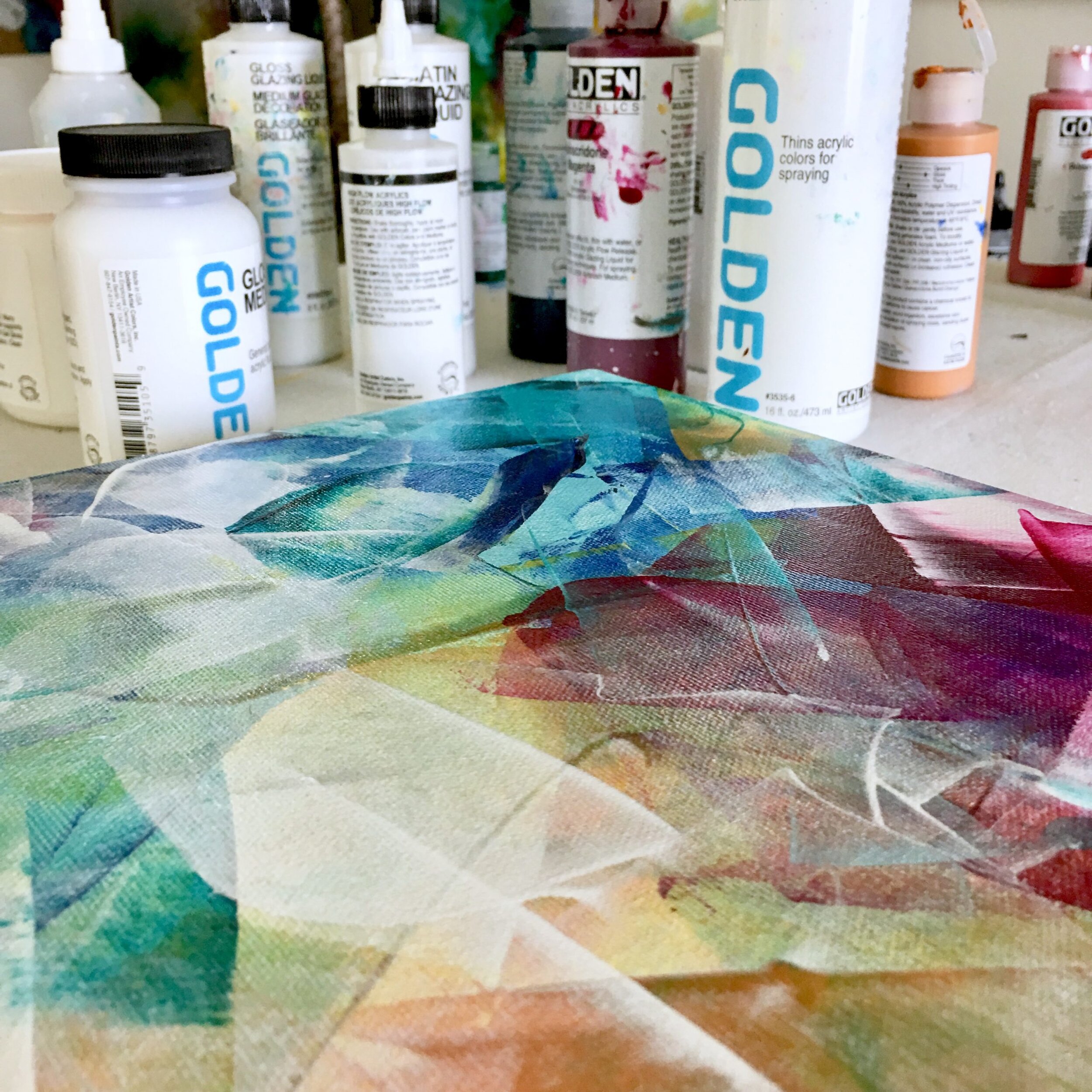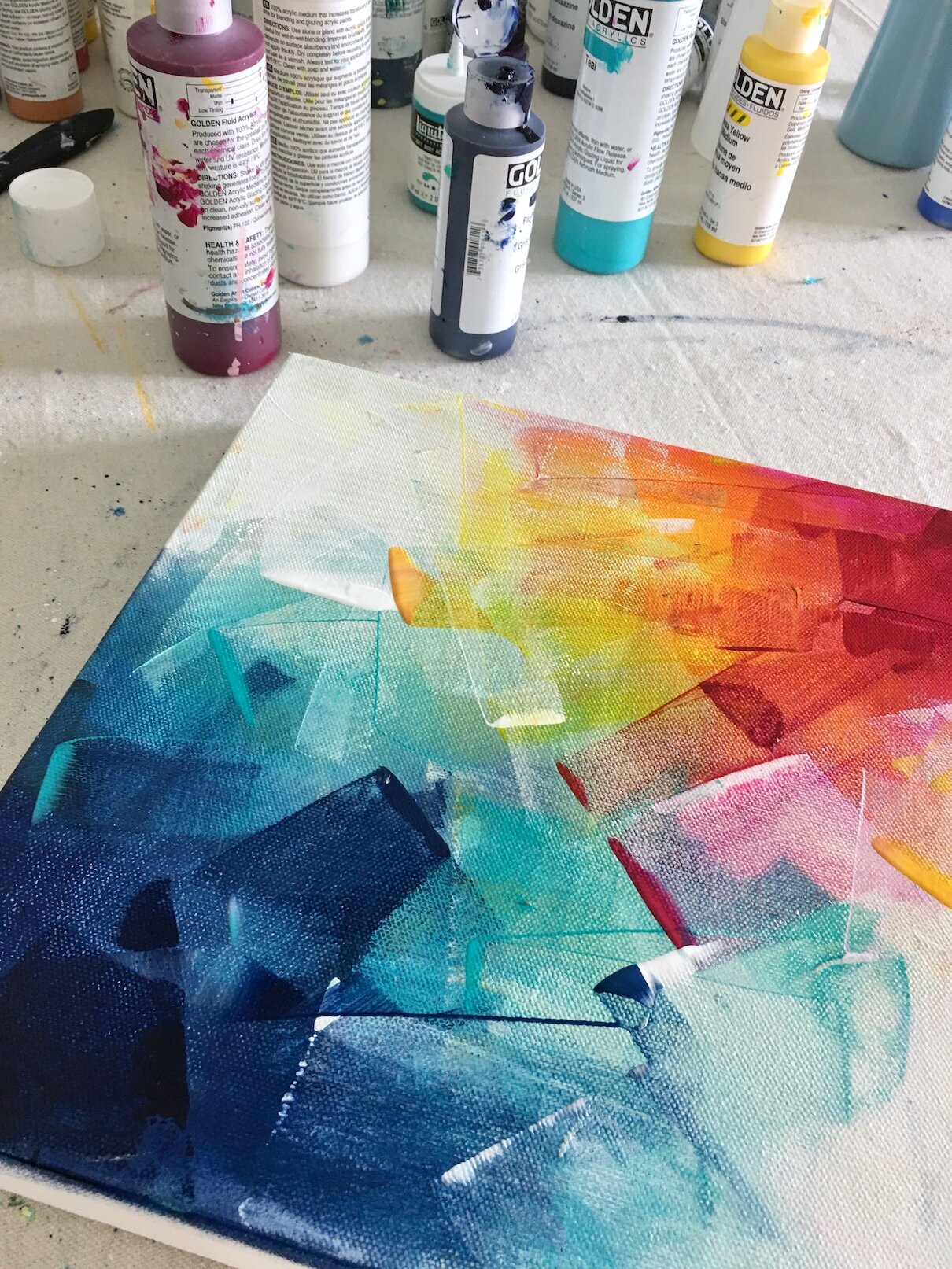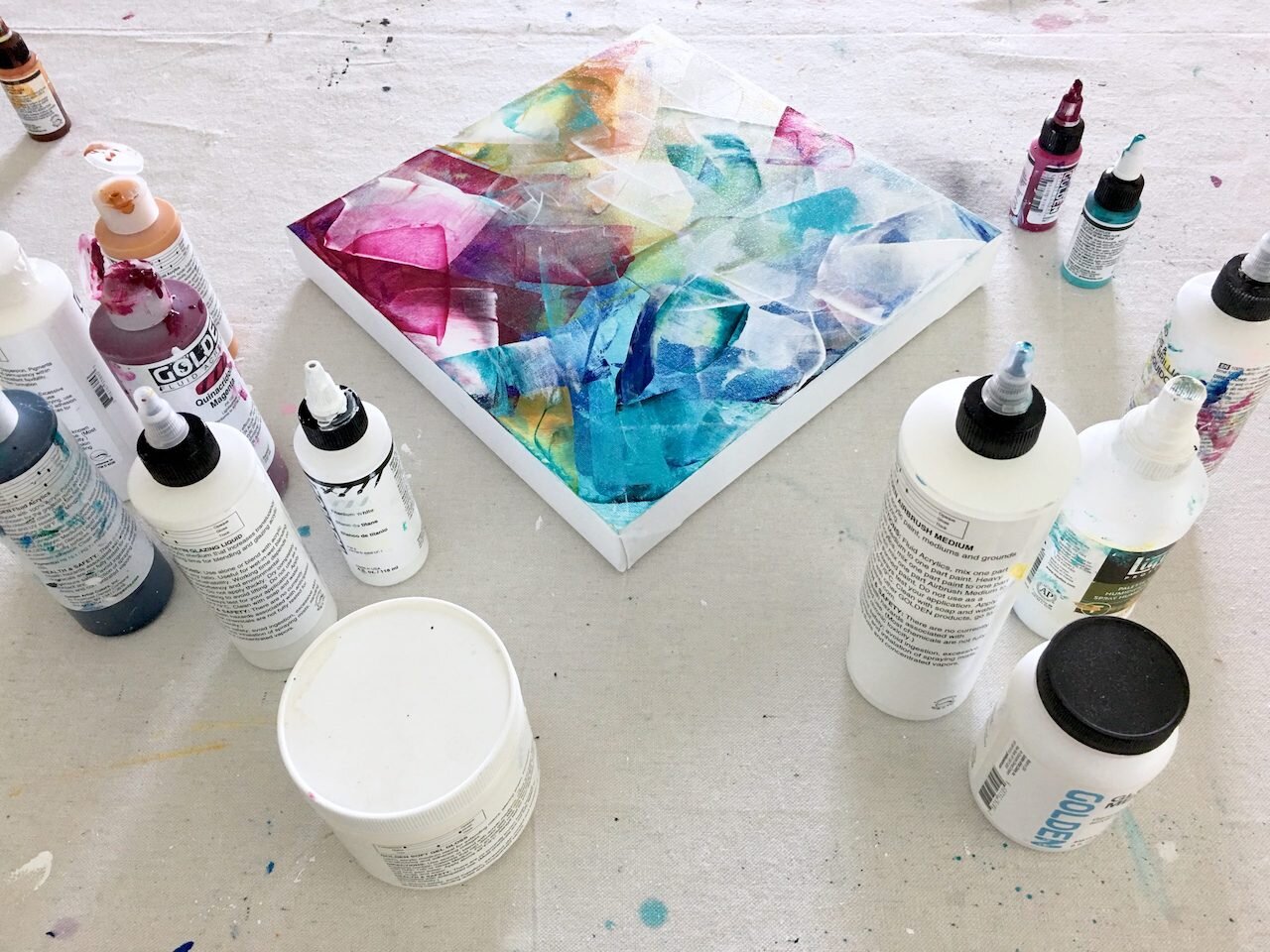3 Reasons for Using Acrylic Mediums
Based on my experience of working with acrylic mediums I want to share with you my "3 Reasons" of why you should give acrylic mediums a try (if you have not done so yet).
Before I jump into the benefits, here's what mediums are:
Acrylic mediums are substances (fluid, gel, or paste) that you can mix with acrylic paints to manipulate the properties of the paint. The base of mediums is the same as acrylic paint, which is an acrylic polymer emulsion. The difference is that, unlike paints, mediums don't contain any color pigments. Mediums have acrylic binders in them (just like acrylic color does) and therefore mix and bond well with the acrylic paint (and the pigments within) that you're using. The binders ensure that the paint & medium mixture will permanently adhere to the painting surface (and not fall off or crack over time). There is a large variety of medium types, each serving somewhat different purposes.
Those of you who used any kind of medium before know that with the acrylic paint alone, you are limited in terms of how it behaves (how it moves, spreads, blends, dries, and what effects you can create). With mediums however, you can change various characteristics of your acrylic paints.
3 Reasons for Using Acrylic Mediums
1 - Altering the Drying Time of Your Acrylic Paints
Running out of time as you try to spread or blend your acrylic paints? One popular feature of a group of mediums is that they prolong (extend) the drying time of acrylic paint - acrylic paint dries fast (which can make it often challenging to blend colors on canvas), but a slow-drying medium will let the paint stay wet for a longer time (by delaying the drying time of water molecules in the paint). This way you have way more time to work with your colors.
Adding a medium that has "slow drying" properties (there are many kinds of mediums offering this option) to the paint will extend the drying time as you apply or spread paint, which can also give you more time to continue blending different colors.
A slow drying medium is different than adding water, as unlike water, the medium binds with the color pigments and will not break them apart . There are some good applications for using water (to wet and extend paint) as well, but as a common rule of thumb when working on a canvas that was primed with gesso, it's best not to use more than a 25% water to paint ratio not to lose the binding quality of the paint. Unlike water, the amount of slow drying medium does not matter, you can use as much as you like without jeopardizing the integrity and binding properties of the acrylic paint. (An exception to this are "additives" such as "retarder" or "acrylic extender". These evaporate after they serve their delaying function and no not contain acrylic binders, hence additives are are not really a "medium". They should not exceed 25% when used with colors - sort of like water).
There are a number of mediums that can extend drying time while also altering the texture or appearance of the paint (permanently) -- an effect that will remain even after the mixture has dried. (More on different effects in #2)
2- Enabling Visual Variety in the Look & Feel of your Painting
Many mediums help you get a lot of variety out of your paint. You can change viscosity, texture, transparency, and the sheen of your paints. This can can create so many possibilities and so much fun in the process!
Most mediums sit somewhere on the scale of viscosity (thickness vs fluidness), level of opaqueness (vs. translucency), sheen level (matte vs glossy), and attributes of drying time (slow or fast drying).
So what can you make of these characteristics ?
Fluid vs Thick
If you desire more of a thin application with a quicker and wider spreading flow (which I often love), and more levelling (smoothness as things dry), a medium with low viscosity (labels may say thin or fluid too) would be your choice (an example would be glazing mediums or other mediums that are very liquid). If however you want to build up some thickness or create texture, a gel type of mediums (like "gel gloss") or texture mediums may be a good choice.
Transparent vs Opaque
For minimum transparency, pick one that is more "opaque". If you are going for a layered look with a lot of translucency (my fave!) opt for a medium that is high on the scale of "transparency". Transparency can help you create a sense of depth or multi dimension.
Gloss vs Matte
Look at what kind of sheen you prefer. Many of the glazing and gel mediums come in matte, satin, and gloss . While all provide similar performance, they differ in the sheen they provide once dried. A medium indicating 'gloss' provides the highest amount of sheen and also the most clarity in a multi layer application, 'satin' has a very subtle sheen and still decent amount of clarity, and 'matte' will produce a very matte result (the end result from mixing paint with a matte medium will feel much less transparent and the color intensity can typically be a little less than with the gloss or satin types).
3 - Increasing Your Paint Amount (a bonus benefit of using mediums)
Through the use of mediums you can get more performance out of high quality acrylic paint - like literally in terms of volume of paint you end up with. Because one unit of medium has a lower cost than the one unit of good quality paint, once you mix the paint and medium, you end up with a larger volume of paint to can cover a broader surface.
So which ones to choose? What mediums you pick is all about personal preference.
It is best to experiment with a variety of the different types as much as you can, so you can see and feel the differences and decides for yourself which ones fit your personal style the most. As you experiment, you will identify your own preferences.
I love working with mediums and the many options they offer. I enjoy working with the Golden brand mediums. You can find similar mediums in different brands, as they are typically made with the same chemical formula.
I have not experimented with all acrylic medium types out there. I tried quite a few and among them I have come to prefer few ones that just really work well for me or work well with the style I'm going for. It is all personal preference like I said. What I have been using are the types of mediums that are most complementary with my work. I love being able to prolong drying time (to allow for more blending and mixing opportunities) and I love the possibility glazing or gel mediums provide in terms of a vibrant, multi layered, and luminous effect. And I'm sure I will continue to discover more possibilities and techniques as I explore!
Want more tips? Grab my free 7 TIPS for Painting With Acrylic Mediums.
I share how you can create vibrant, colorful, and translucent layers in your abstract paintings with Acrylic paints & mediums in my online course called "Vibrant Layers with Acrylics & Mediums". You can find out more about this learning opportunity over here.





